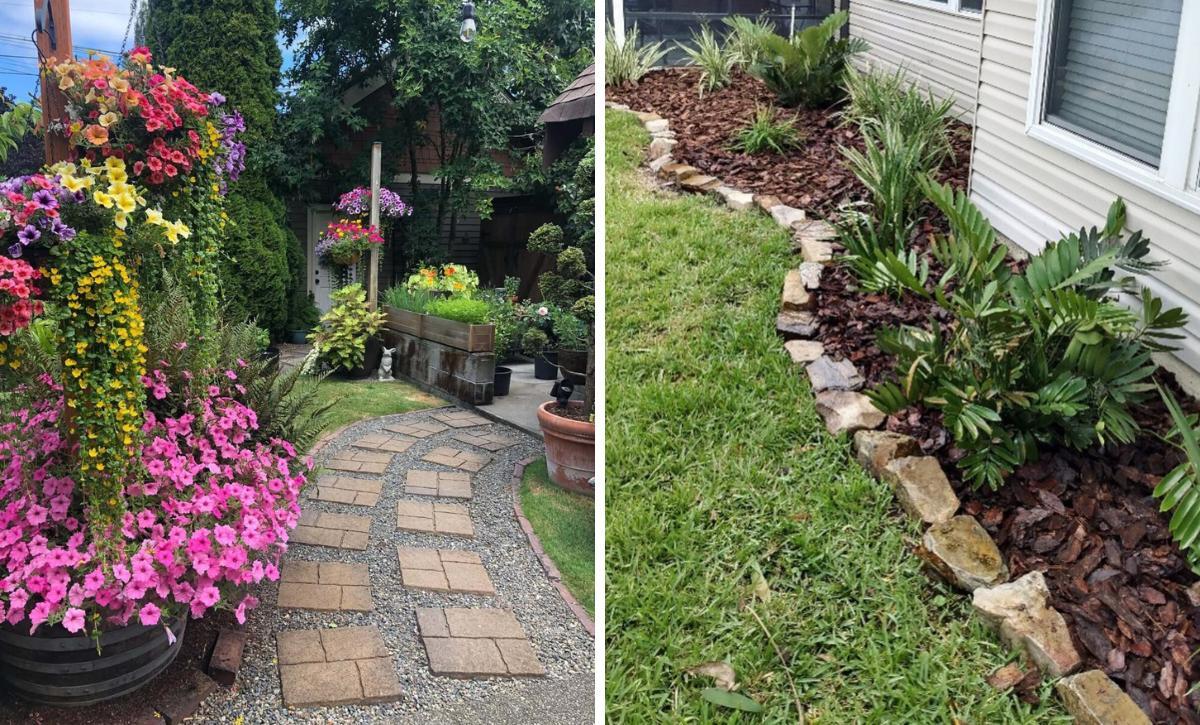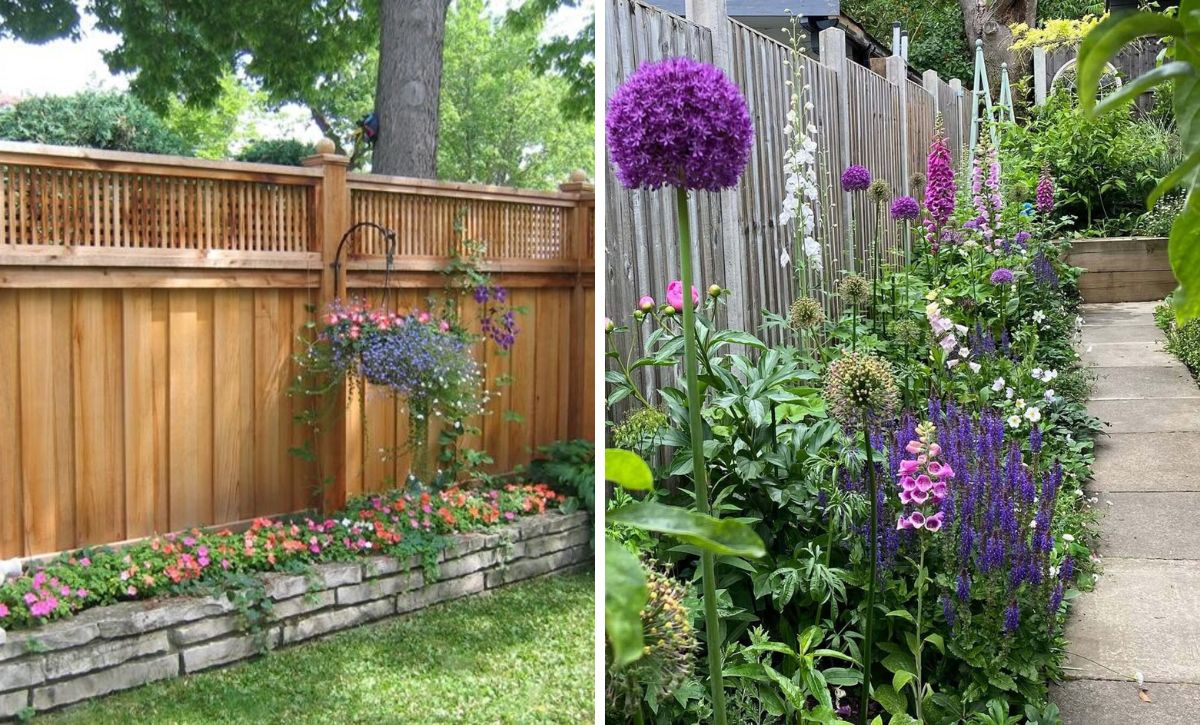Watermelon is the perfect fruit for a hot summer. Growing this plant will largely depend on the climate and the weather conditions. However, one of the most important things to familiarize yourself with is the different growing stages of the fruit to fulfill the plant’s needs correctly.
Before we do a deep dive into the details, let’s analyze some specifics about this plant:
| Scientific name: | Citrullus lanatus |
| Native habitat: | Africa |
| Ripening time: | 70-90 days after planting |
| Fruit size: | Cultivated varieties may be over 60 centimeters (2 ft) long |
| Vine size: | Average vines spread up to 3 meters (10 ft), but some can be 3.6-4.5 meters (12-15 ft) long |
Now that we’re done with the basics about watermelons, it is time to do an in-depth analysis of this fruit.
This article will present a detailed analysis of the growth stages of watermelons and how to take care of this fruit every step of the way.
We’ll also discuss the watermelon plant care guide and common issues you may encounter.
Let’s get started!
Watermelon Growing Stages
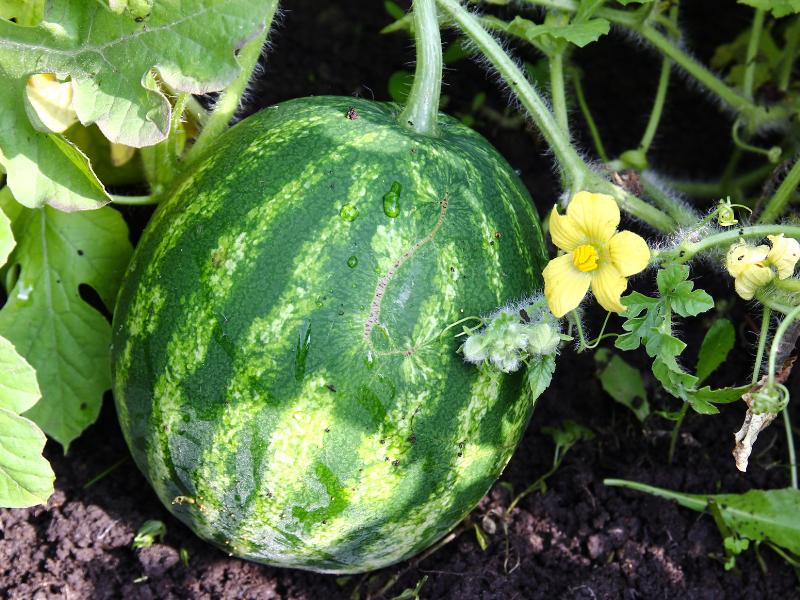
Watermelons belong to the Cucurbitaceae family, which also includes plants like cantaloupes, cucumbers, zucchinis, and pumpkins. Suppose you’ve had experience growing plants from this family, such as pumpkins. In that case, you’re in luck since it may help you master watermelon growth.
Watermelons have nine growth stages, and it’s essential to understand each one since they’re crucial for the proper care of the plant. For example, watering requirements will differ in different stages.
Here is a detailed examination of these stages.
1. Planting
The first and most crucial stage is planting. You’ll need to first decide which watermelon variety you will grow. For people living in colder regions, the early-season variety is the best option since watermelons need all the sun they can get during the growing season.
Watermelon seeds should be started indoors four weeks before the last frost date for people living in cold regions. The seedlings can then be transplanted when the soil temperature is at 70℉.
Chitting the seeds is another critical step you should consider during the planting period. This involves placing the watermelon seeds in a damp place, like a paper towel or toilet paper, in a container and covering it with plastic wrap. The seeds should root within 2-3 days. This not only ensures that you plant viable seeds but also increases the yield.
Next, plant the seeds an inch deep and six feet from each other. This gives the plants ample space to grow and spread. You can also use trellises to grow the plants vertically.
The planting medium or the soil should be loamy and well-drained. The plants need to receive between 8 and 12 hours of sunlight, so they should be planted in a place with plenty of sun. Lastly, water the seeds.
2. Germination
This is the first growing stage for watermelon plants, which commences once the seeds are covered in soil. However, the seeds should not be planted in a medium with a temperature lower than 65℉ since they won’t germinate.
Another vital factor is watering. This is a no-brainer, really! If the seeds are not watered, they will not germinate. As mentioned in the chitting process, moisture is essential for germination.
It takes 3-12 days to notice the germination of the seeds, even though the process may have begun earlier with the hypocotyl, radicle, and roots protruding from the seed.
3. Sprouting
Once the seeds have germinated, you’ll notice the embryonic leaves, which are the first two leaves of the sprouts.
Young seedlings are vulnerable and should be protected from animals and strong winds if planted outside. Watering is also crucial for the seedlings to thrive; just remember the soil should be kept moist and not overwatered, as this could kill the plant.
If the seedlings are started indoors, wait until more leaves appear and the vine grows to about 6-10 inches.
4. Vegetative Growth
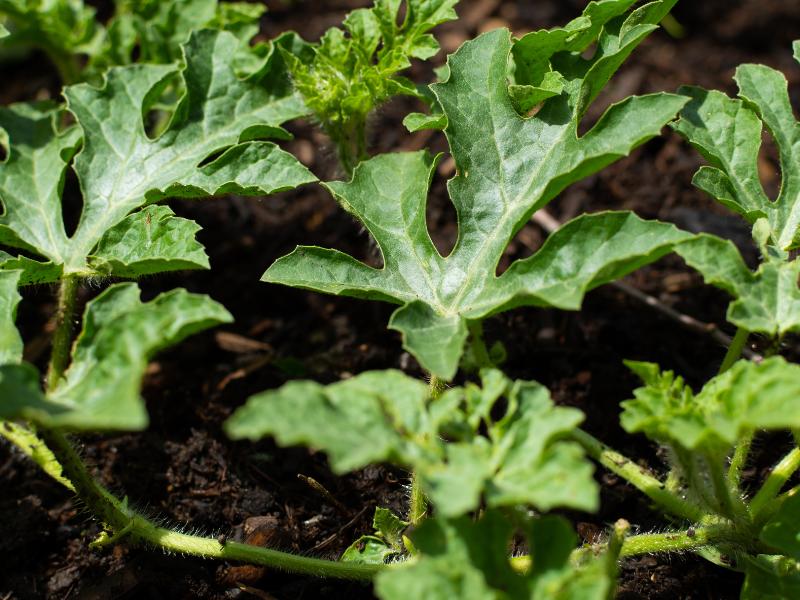
After sprouting, the plant will grow at a faster rate as compared to previous stages. The first real leaves of the plant will appear after 5-10 days; these leaves differ from the first embryonic leaves, so they should be easy to recognize.
Once photosynthesis begins in the real leaves of the plant, it starts absorbing the necessary nutrients for growth. The plant will exhibit rapid growth in about two weeks. Consequently, it will get longer, and the leaves will become more prominent.
As the vine reaches about 12 feet (3.6m) long, new vines will start sprouting from the plant.
5. Branching
The formation of new vines on the watermelon is known as branching. Once new vines start forming, there’s no need to remove them. Adding extra nutrients to the plant at this point may be just what the watermelon needs. This can be done by adding 120 ml (equivalent to half a cup) of bone meal to the soil.
Mix the bone meal into the soil gently without damaging the roots. Due to the rapid growth rate at this stage, the plant should be watered more frequently. Watering the plant to an inch twice a week will suffice.
The growth of new vines will continue until the flowering process starts.
6. Flowering and Pollination
A common misconception about watermelons is that there are male and female watermelons, which is far from the truth. While there are male and female flowers, they both exist on the same plant and produce a unisex fruit.
The first flowers that appear are the male flowers, followed shortly after by female flowers, and pollination begins soon after. This occurs when the male flowers transfer pollen to the female ova. If pollination is successful, fruit formation starts.
There are several insects that can help with the pollination process, such as bees, bumblebees, and wasps. If you are skeptical about cross-pollination, hand-pollination is the best alternative.
To minimize the chances of cross-pollination, separate the watermelons from other plants and use a Q-tip to transfer pollen to the female ova.
7. Setting of Fruit
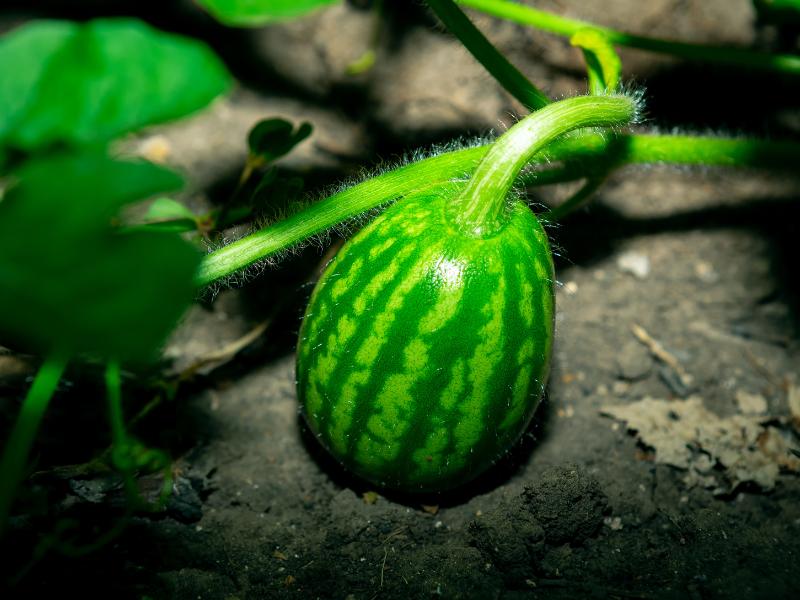
If pollination is done correctly, fruit formation should begin. This will be characterized by a small bulge behind the female flower. Consequently, this bulge swells and becomes large, leading to the formation of the watermelon fruit.
During fruit formation, you can fertilize the plant with a low-nitrogen fertilizer such as 5-10-10. At this point, the watering can be reduced to about an inch (2.5cm) once a week. This will ensure that the plant does not develop a watery taste.
8. Harvesting
Watermelons take about a month to mature. However, there are several signs that you can look out for just to be sure that the fruit is ripe.
One of the key signs that watermelon is ripe is a yellow spot on the rind. A webbed fruit is another good sign in watermelons since it’s believed webbed melons are sweet.
The sweetest melons are believed to be the ones that produce hollow sounds in dark green and in oblong shapes (it may be difficult to tell apart the hollow sounds)
Color shouldn’t be a main telling factor since some watermelons are light green naturally.
Ensure that you research the variety that you have grown.
9. Drying
Like every good thing in life, watermelons also have an end. Once harvested, the watermelon vines will begin drying out since it’s the end of their life cycle.
However, this shouldn’t scare you. You can save the seeds from the harvested watermelons and plant them once they are dry; unless you have grown the seedless variety of watermelons. Wait until spring to grow your new seeds since this is the best time.
How Long Does It Take To Grow Watermelons?
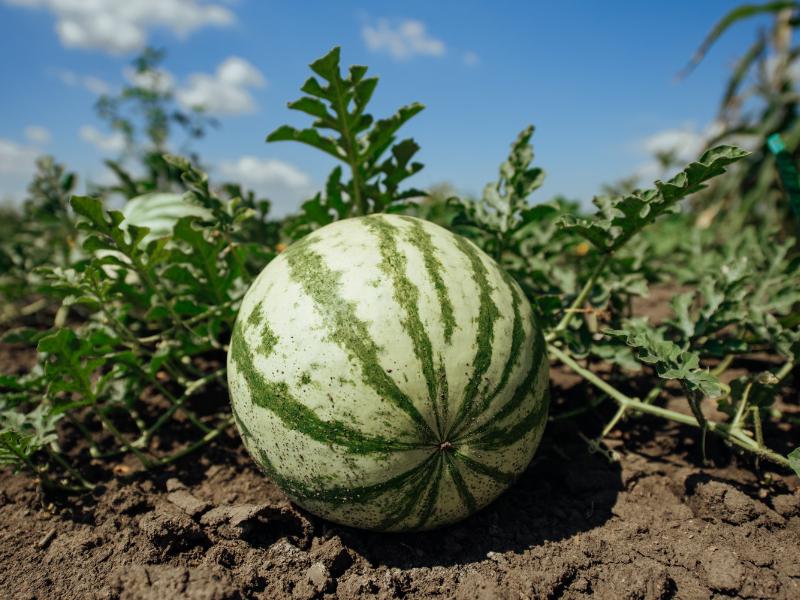
Most watermelons take about three months to mature. The time taken depends on the variety of the watermelon; some plants can take four months to ripen.
In the first two months, the plant will grow and develop new vines and leaves. At the end of this period, flowers appear and are pollinated. In the third month, the flowers form into a fruit, then mature and ripen, ready for harvest.
While this depends on the variety, small watermelon varieties mature sooner than larger ones.
It’s important to note that watermelons are annual plants. Even though they mature quickly, they have a high yield return.
How to Grow Watermelons
Now that you know the different growing stages for watermelons, it’s time to look at their main growing requirements.
The following section has prepared the key watermelon growing needs that will have you cultivating this fruit in no time.
Water Requirements
As previously discussed, watermelons have different water needs at different stages. The amount of water used should be adjusted as the plant grows to get a sweeter fruit.
The plant should be watered thoroughly immediately after planting and during the growing and flowering stages. Watering amounts should range between 1-2 inches (2.5-5cm), depending on the weather or climate of the region. After fruit formation, the watering should be reduced to get a sweeter, tasting fruit.
When watering, be careful to avoid wetting the leaves. This is because wetting the leaves increases the risk of infection and the formation of powdery mildew.
It’s important to ensure the watermelons aren’t overwatered, which could cause root rot. This will not only affect yields but could also lead to the death of the plant.
Humidity Requirements
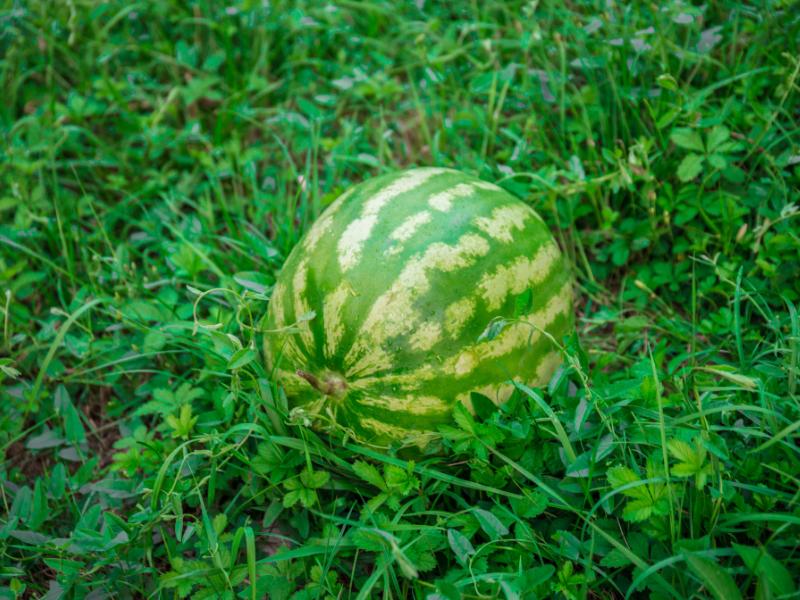
Like water, the humidity requirements for the plant will vary during different growing stages. During the early stages (immediately after planting), the humidity levels should be 65-75%. This should be adjusted to 60/70% during the growing stages. This should be decreased even further during fruit formation.
However, these are slight differences, and the plant won’t suffer significantly with a 5% variation in the humidity levels.
Temperature
The optimal temperature to grow watermelons is between 65- and 95℉. Temperatures higher than 95℉ and lower than 50℉ will stunt the plant’s growth.
Depending on the variety, watermelons will have different temperature needs. As such, it’s advisable to research what variety fits your region or what temperatures your variety needs. If the temperature increases, you should also increase the watering to help the plant cope.
Soil
Watermelons thrive in mildly acidic to neutral soil with a pH of 6.0-7.0. Ensure that the soil is well drained and rich in nutrient content as well as organic material. Adding some compost could help adjust the soil in this regard.
The ideal type of soil for these plants is loose or loamy soil. Compact clay soil with a high water retention rate can be a real nuisance to the plants.
During periods of intense heat, your watermelons will need mulching to help retain moisture and keep the roots cool. There are different mulching materials that you can use, such as straws, shredded newspapers, and grass clippings. Research the advantages and disadvantages of different mulching materials before using them.
Fertilizer
Watermelons will need to be fertilized with nitrogen-rich fertilizers during the vegetative growth period. Well-balanced nitrogen fertilizers such as Triple 10 could do the trick.
After the flowering stage begins, reduce the use of nitrogen-based fertilizers, as this could delay the flowering process and diminish the plant yield. You can switch this up with phosphorus and potassium-rich fertilizers (5-10-10), which are crucial for flower and fruit formation.
Transplantation
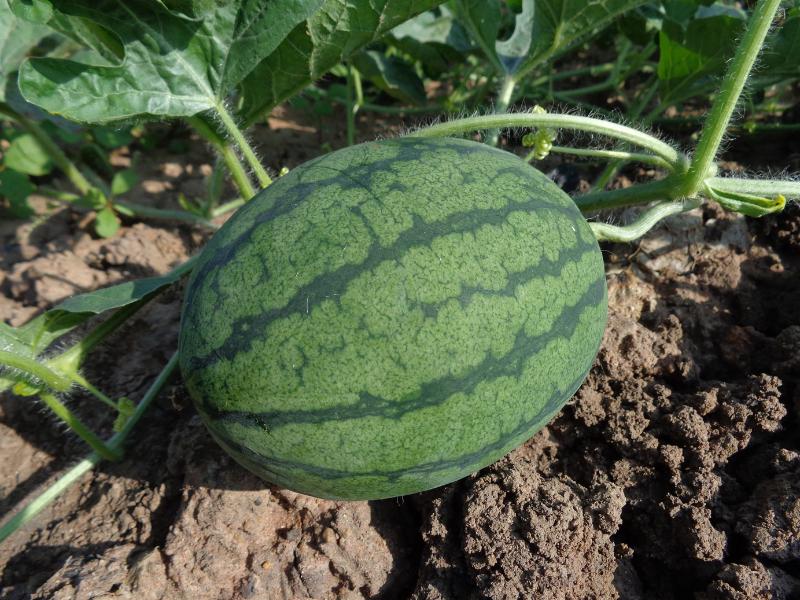
Transplantation is especially beneficial for people living in cold areas where the watermelon seedlings have to be started indoors and transplanted outside after the frost period has passed.
One of the main benefits of transplantation is early harvest since the plant has a head start before planting outside.
Watermelons should be transplanted once the third set of true leaves forms. Waiting longer than this will complicate the transplantation process as the vines can intertwine or break.
For those who grow the plants on the ground, there should be plenty of room to handle further unexpected spread of the vines. Depending on the variety, watermelons should be grown 6-20 feet apart to ensure that each plant does not affect other crops.
Using black row covers or plastic mulch will ensure the soil is warm enough and keep pests at bay for growers in colder climates.
Lastly, prepare the seedlings for the new environment by toughening them. This can be done by gradually introducing the seedlings to the outdoor environment, such as the lighting conditions.
Once the seedlings have been transplanted to the new environment, ensure they’re well watered.
Pruning
Most people are skeptical about pruning their watermelon plants, but pruning is nothing to fear. In fact, it even promotes better growth and increased fruit size.
When pruning, remove every dead, diseased, or yellow leaf on the vine right where it connects with the main vine. Side vines that don’t have any flowers or appear weak can also be removed. This ensures that energy is directed to the healthy parts of the plant, which boosts plant health and yield.
Pro Tip: Ensure the pruned vines are dry, as moisture increases the risk of infections and pests.
Common Issues With Watermelons
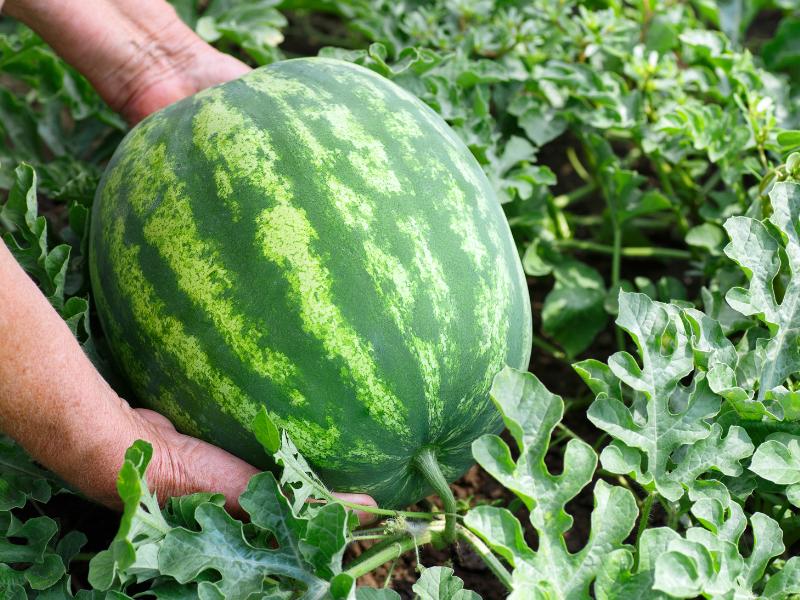
While these fruits are delicious, they’re also prone to diseases and pests.
However, worry not! There are several techniques that you can use to deal with these issues.
Here is a detailed look at the common pests and diseases that attack watermelons.
Diseases
Anthracnose and powdery mildew are the common diseases that affect watermelons. Anthracnose is characterized by brown spots, which later turn black. The disease develops in warm and moist conditions and could lead to the death of the plant if not treated early.
You can minimize the risk of this disease by using fungicides, planting anthracnose-resistant varieties, and practicing plant rotation.
Another disease is the powdery mildew caused by wetting the vine’s leaves. This disease thrives in humid conditions. It’s characterized by the formation of a powder on the young parts of the plant and upper leaves or vines. The powder will gradually turn brown if left untreated and lead to the death of the whole plant.
Apply a fungicide as soon as you notice the symptoms of the disease to minimize your losses.
Pests
The common pests that invade watermelons are thrips, aphids, cucumber beetles, spider mites, and cabbage loopers.
Most of the insects and pests on this list can be countered by applying insecticidal soaps. Alternatively, you can introduce natural predators to the pests, such as ladybugs that prey on aphids or soldier beetles to deal with cucumber beetles.
Common Questions Asked About Watermelons
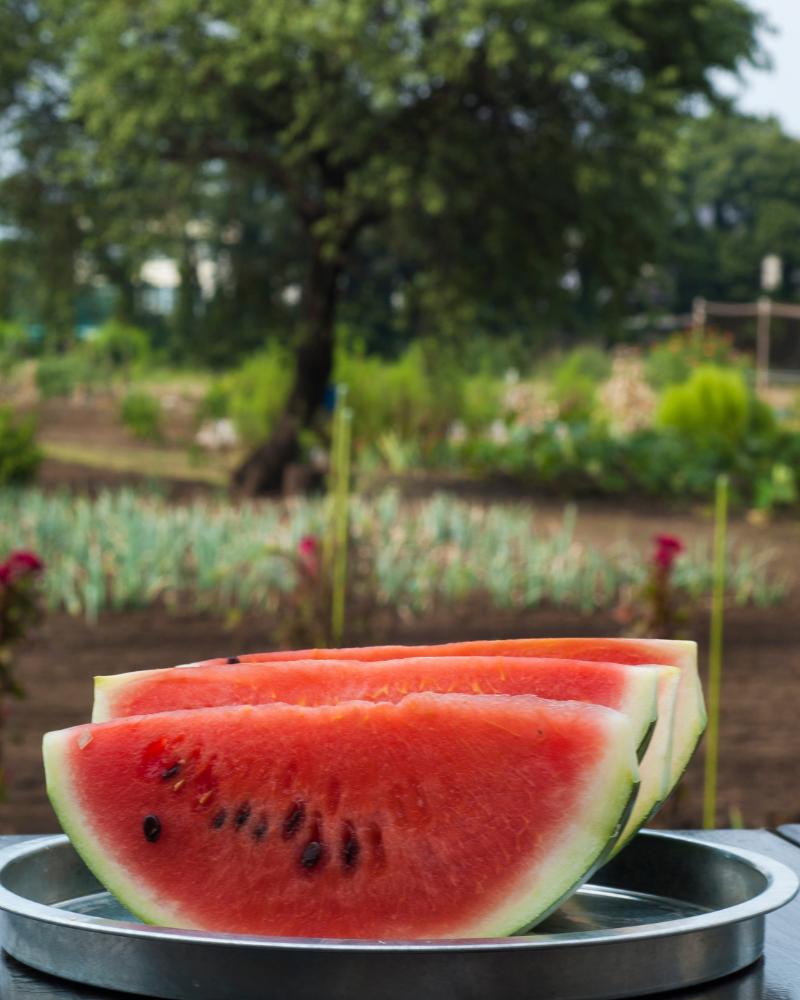
While this article has encompassed almost everything you need to know about growing watermelons, we understand you may seek clarity on some issues.
So, in the following section, we have discussed some common questions and concerns about watermelons to ease your mind.
1. What is the average weight of a watermelon?
An average large watermelon will weigh about 20 pounds or 9kgs. Smaller watermelon varieties weigh around 5 pounds (2.3kg). This is as per the statistics given by the watermelon board.
2. How can I differentiate between a green and a ripe watermelon?
There are a few strategies you can use here. First, look for the field spot of the watermelon. This is where the watermelon fruit touches the ground. Ripe watermelons will have a yellow field spot, while unripe ones will have a pale or white one.
Another way to tell if the watermelon is ripe is by knocking on the fruit. Ripe watermelons will make a hollow sound, while unripe ones make a high-pitched sound.
When the watermelon is ripe, the vine that connects to the fruit turns brown, but the vines retain the green color on other parts away from the fruit.
Lastly, you can tell if the watermelon is ripe by checking the schedule and date of planting, which will help you discern whether the fruit has ripened enough.
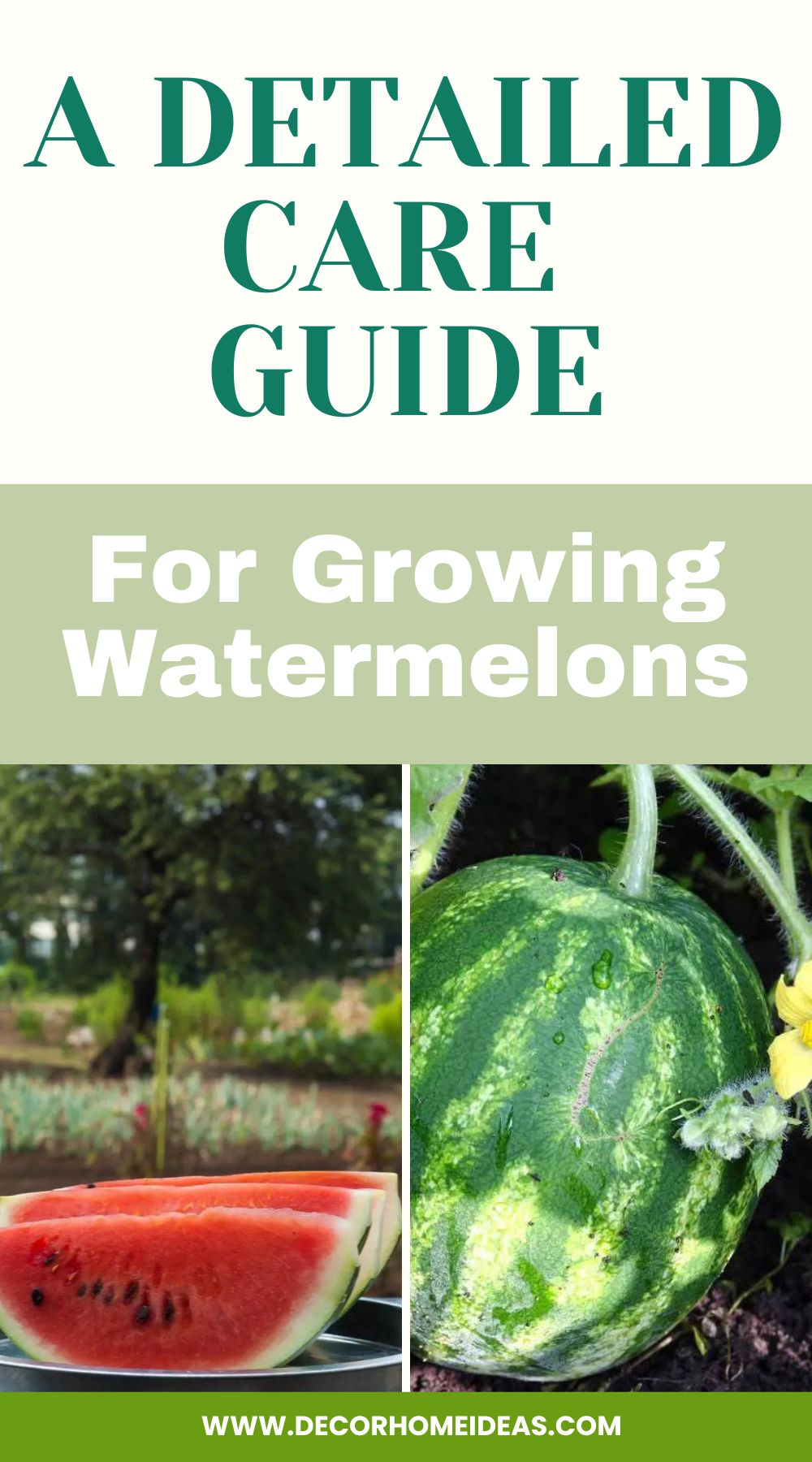
Closing Remarks
Watermelon is among the most refreshing fruits, especially on hot summer days. Knowing more about the different growth stages is important and quite useful for first-time growers.
It’s important to note that watermelons will have different needs in different growth stages. For example, watering requirements may fluctuate during vegetative growth, flowering, and fruit formation.
With the care guide in this article, it should be easier to take care of your plants if you choose to grow watermelons. Even though they aren’t needy plants, watering them and ensuring they receive enough sunlight is crucial for them to thrive.
Ensure that the watermelons are planted in well-drained soil. For even better yields, add some fertilizer to the soil during the growing season.
A nice slice of watermelon can quench your thirst and sate your hunger! So don’t shy away from trying a fruit or two of this refreshing fruit.
Thanks a melon for reading!





